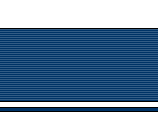COFI
ARM Cost of Funds Index
The
11th District Cost of Funds is more prevalent in the West and
the 1-Year Treasury Security is more prevalent in the East. Buyers
prefer the slowly moving 11th District Cost of Funds and investors
prefer the 1-Year Treasury Security.
The
monthly weighted average Eleventh District has been published
by the Federal
Home Loan Bank of San Francisco since August 1981. Currently
more than one half of the savings institutions loans made in California
are tied to the 11th District Cost of Funds (COF) index.
The
Federal Home Loan Bank's 11th District is comprised of saving
institutions in Arizona, California and Nevada.
Few
people who use and follow the 11th District Cost of Funds understand
exactly how it is calculated, what it represents, how it moves
and what factors affect it.
The
predecessor to the 11th District Cost of Funds index was the District
semiannual weighted average cost of funds published for a six
month period ending in June and December. The San Francisco Bank
was the first Federal Home Loan Bank to publish a monthly cost
of funds index.
The
funds used as a basis for the calculation of the 11th District
Cost of Funds index are the liabilities at the District savings
institutions: money on deposit at the institutions, money borrowed
from a Federal Home Loan Bank (known as advances) and all other
money borrowed. The interest paid on these types of funds is the
cost of these funds.
The
ratio of the dollar amount paid in interest during the month to
the average dollar amount of the funds for that month constitutes
the weighted average cost of funds ratio for that month.
The
average cost of funds is said to be weighted because the three
kinds of funds and their costs are added together before a ratio
is computed rather than calculating averages individually for
the three sources and using a simple average of the three ratios.
This gives the greatest weight to the interest paid on deposits,
and explains the delayed reaction of the index to rising fixed-rate
mortgages.





